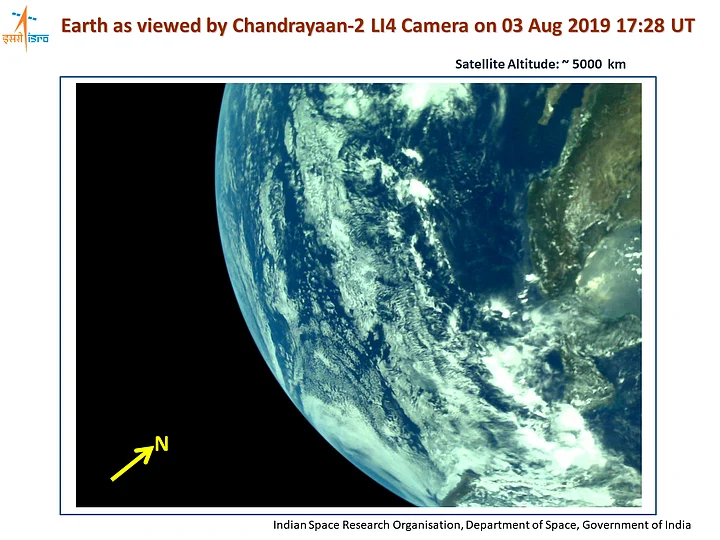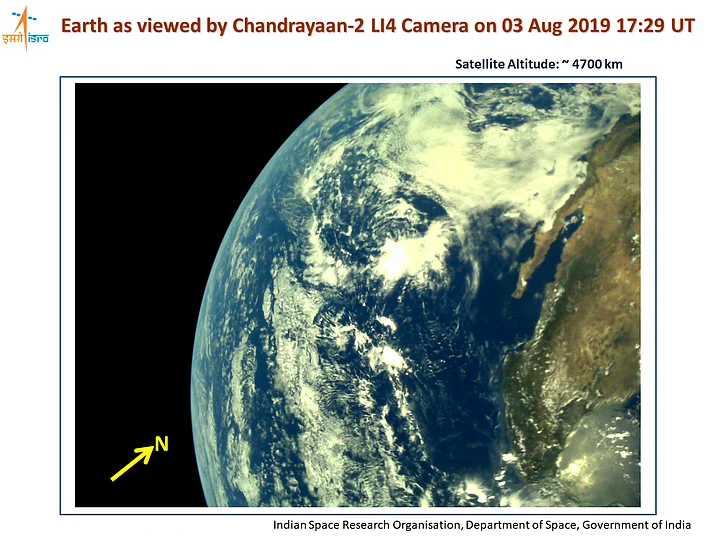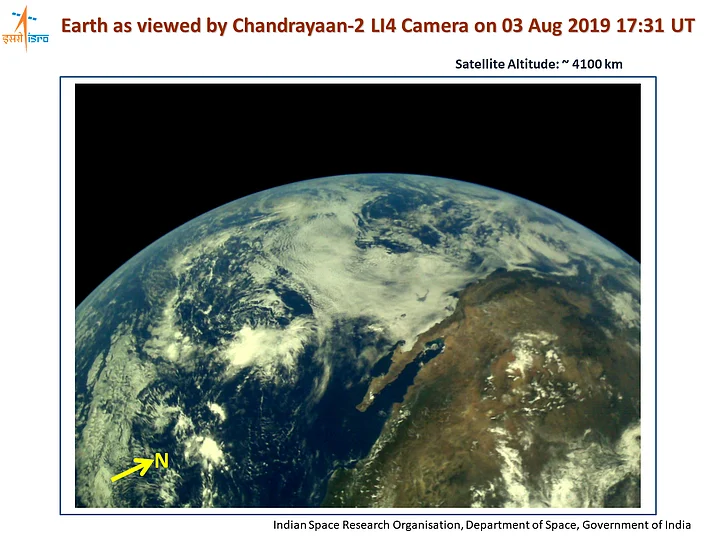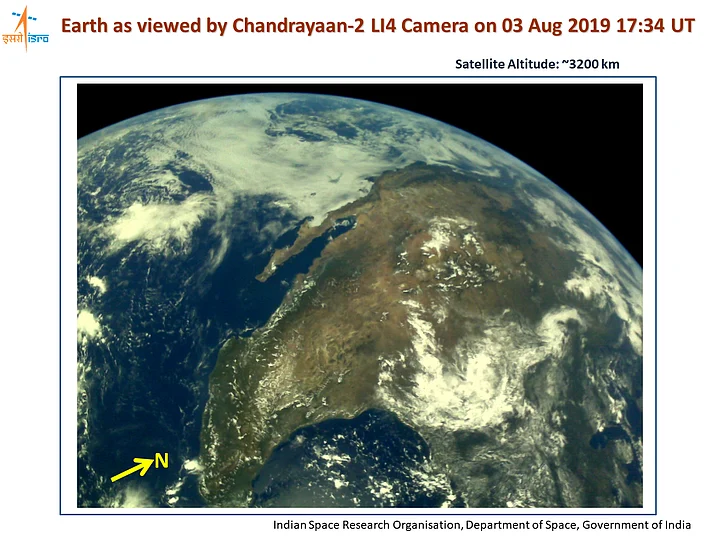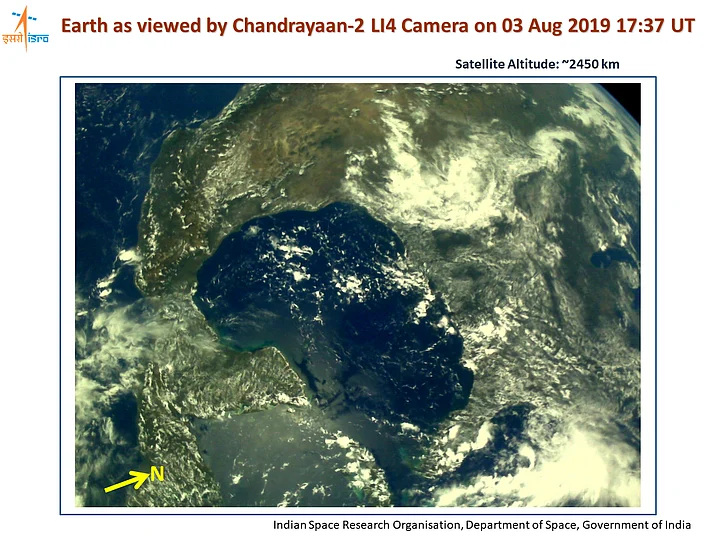How has India’s second unmanned mission to the Moon been? Here’s a summary of Chandrayaan-2’s journey to the Moon.
The start of Chandrayaan-2 was a bit dodgy. It was scheduled to take off in the early hours of July 15 aboard the GSLV Mark 3 rocket. However, a leak in one of the helium tanks on the rocket meant the launch had to be aborted. It was rescheduled for 22 July 2019.
At 2.43 pm on 22 July, Chandrayaan 2 successfully took off on its way to low-Earth orbit. ISRO then conducted a series of orbit raising manoeuvres, firing its onboard propulsion system.
This was done successively on 24, 26, 29 July and then 2 and 6 August, to get it into an elliptical orbit, whose furthest end or apogee would bring it close to the lunar orbit.
These are some of the images of Earth Chandrayaan 2 sent back on 4 August 2019.
And then on 14th August, Chandrayaan 2 was sent on a trans lunar insertion with another firing of the engine. This was its date with the lunar orbit.
On 20th August, Chandrayaan 2 entered the lunar orbit. Now, it began a series of orbit lowering manoeuvres, which finally brings it to about a 100 km above the surface of the Moon.
There are three components to Chandrayaan 2 – the orbitor, the lander named Vikram and inside which is the rover named Pragyan.
On 2 September, the lander Vikram, successfully detached from the orbitor. The orbitor will continue to circle the Moon at a height of about 100 km for about a year or more.
The lander Vikram has a set of five engines aboard, which are being fired periodically, about five times, to bring it closer to the Moon’s surface as it circles in an elliptical orbit.
On 4 September it was just about 35 Km from the surface of the Moon. After that is the difficult part as it does a series of braking manoeuvres, firing its engines to perform a soft landing on the South Pole of the Moon between craters Manzinus C and Simpelius N at about 70 degree South latitude on the Moon.
Then the six-wheeled Pragyan rover, which weighs just 27 Kg on Earth and generates about 50 watts of power from solar panels, will drive out of the lander and survey for elements that can confirm the presence of water on the Moon.
That’s Chandrayaan 2-’s epic journey. Stay tuned for more updates on The Quint.
